This is my input sudoku image : 0000.png and this is my desired output image : output.
I am trying to find the contours of the sudoku board so I can extract the board separately. This is the code I've tried so far.
import cv2
import operator
import numpy as np
import matplotlib.pyplot as plt
image = cv2.imread("0000.png")
gray = cv2.cvtColor(image, cv2.COLOR_BGR2GRAY)
blur = cv2.GaussianBlur(gray, (5,5), 0)
thresh = cv2.adaptiveThreshold(blur, 255, 1, 1, 11, 2)
contours,_ = cv2.findContours(thresh, cv2.RETR_TREE, cv2.CHAIN_APPROX_SIMPLE)
max_area = 0
c = 0
for i in contours:
area = cv2.contourArea(cv2.UMat(i))
if area > 1000:
if area > max_area:
max_area = area
best_cnt = i
image = cv2.drawContours(image, contours, c, (0, 255, 0), 3)
c+=1
mask = np.zeros((gray.shape),np.uint8)
cv2.drawContours(mask,[best_cnt],0,255,-1)
cv2.drawContours(mask,[best_cnt],0,0,2)
out = np.zeros_like(gray)
out[mask == 255] = gray[mask == 255]
blur = cv2.GaussianBlur(out, (11,11), 0)
thresh = cv2.adaptiveThreshold(blur, 255, 1, 1, 11, 2)
c = 0
for i in contours:
area = cv2.contourArea(i)
if area > 1000/2:
cv2.drawContours(image, contours, c, (0, 255, 0), 3)
c+=1
These are the images I'm able to extract after finding adaptive thresholds and using contours to draw masks.
plt.imshow(out, cmap='gray')
plt.imshow(thresh, cmap='gray')
plt.imshow(image)
How can I modify my code to generate the output image, where the sudoku board is cropped as in output ?
EDIT :
I tried extracting the coordinates of the biggest blog and cropped the largest rectangle, but it's still not accurate as the output image I desire.
contours, h = cv2.findContours(out.copy(), cv2.RETR_EXTERNAL, cv2.CHAIN_APPROX_SIMPLE)
contours = sorted(contours, key=cv2.contourArea, reverse=True)
polygon = contours[0]
bottom_right, _ = max(enumerate([pt[0][0] + pt[0][1] for pt in polygon]), key=operator.itemgetter(1))
top_left, _ = min(enumerate([pt[0][0] + pt[0][1] for pt in polygon]), key=operator.itemgetter(1))
bottom_left, _ = min(enumerate([pt[0][0] - pt[0][1] for pt in polygon]), key=operator.itemgetter(1))
top_right, _ = max(enumerate([pt[0][0] - pt[0][1] for pt in polygon]), key=operator.itemgetter(1))
box = [polygon[top_left][0], polygon[top_right][0], polygon[bottom_right][0], polygon[bottom_left][0]]
def distance_between(p1, p2):
"""Returns the scalar distance between two points"""
a = p2[0] - p1[0]
b = p2[1] - p1[1]
return np.sqrt((a ** 2) + (b ** 2))
def crop_and_warp(img, crop_rect):
"""Crops and warps a rectangular section from an image into a square of similar size."""
top_left, top_right, bottom_right, bottom_left = crop_rect[0], crop_rect[1], crop_rect[2], crop_rect[3]
src = np.array([top_left, top_right, bottom_right, bottom_left], dtype='float32')
side = max([
distance_between(bottom_right, top_right),
distance_between(top_left, bottom_left),
distance_between(bottom_right, bottom_left),
distance_between(top_left, top_right)
])
dst = np.array([[0, 0], [side - 1, 0], [side - 1, side - 1], [0, side - 1]], dtype='float32')
m = cv2.getPerspectiveTransform(src, dst)
return cv2.warpPerspective(img, m, (int(side), int(side)))
cropped = crop_and_warp(out, box)
plt.imshow(cropped, cmap='gray')
The border is not neatly extracted unlike my desired output image. The reason I want it in this format is because then then the image can be split into 81 images with the help of a 9x9 grid and I could detect all the numbers in each of the image. The black trace above the image is causing troubles there.



